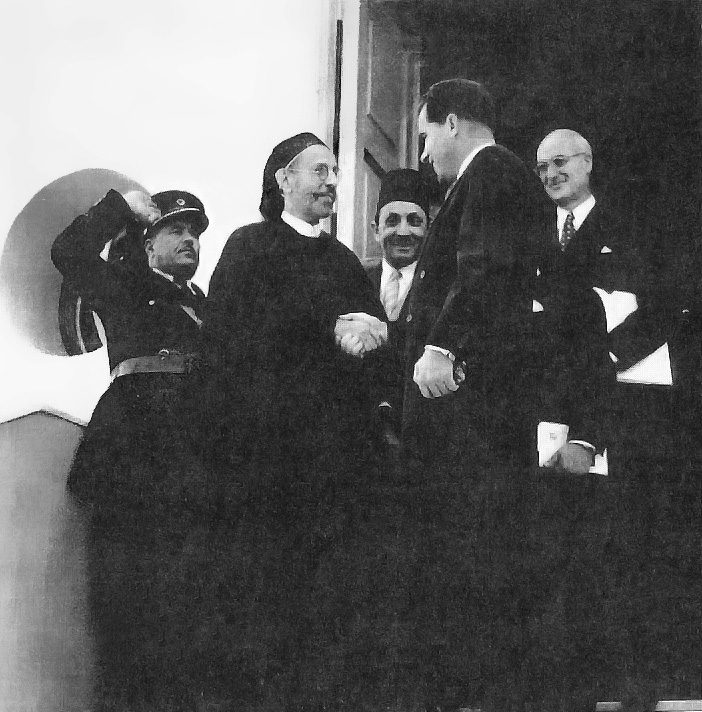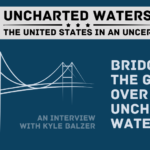In a recent Wikileaks revelation, a secret U.S. cable revealed that Senators John McCain and Joe Lieberman promised to provide Muammar Gaddafi with military hardware in 2009. McCain and Lieberman were among the last high-level teams to have made such a promise, but they certainly weren’t the first. From the very beginning of the Gaddafi regime’s existence in 1969, western leaders have rationalized arms sales to oil-rich Libya. Often, these justifications were cast in stark Cold War terms, however, archival evidence from the United States and the United Kingdom points towards a different, more pragmatic explanation. Libyan arms sales represented an opportunity to reinvest petrodollars in western businesses.
 This process began in the early 1960s, when Libyan oil emerged as a “safe alternative” to oil from the Persian Gulf. Then ruled by a pro-American monarch, King Sayyid Muhammed Idris, Libya was first suggested as a reliable alternative in a May 1959 meeting of the National Security Council. The Persian Gulf, the NSC concluded, “was in a position to exert too much economic and political leverage against Western Europe.” Libya’s newly-discovered reserves, on the other hand, were safely within the western bloc and ready for development. “The nub of the matter,” Vice President Richard Nixon said in that meeting, “was what to do about Libya.” Encouraged by a Libyan petroleum law written by a Palestinian nationalist lawyer imposing limits on concession sizes, smaller companies jumped at the chance to enter Libya and production increased in the following decade. At the same time, the State Department argued for the cultivation of closer political relations with all Arab oil producers, to help overcome the “ideological ferment” of their pan-Arabism and make them more “interdependent with the West.”
This process began in the early 1960s, when Libyan oil emerged as a “safe alternative” to oil from the Persian Gulf. Then ruled by a pro-American monarch, King Sayyid Muhammed Idris, Libya was first suggested as a reliable alternative in a May 1959 meeting of the National Security Council. The Persian Gulf, the NSC concluded, “was in a position to exert too much economic and political leverage against Western Europe.” Libya’s newly-discovered reserves, on the other hand, were safely within the western bloc and ready for development. “The nub of the matter,” Vice President Richard Nixon said in that meeting, “was what to do about Libya.” Encouraged by a Libyan petroleum law written by a Palestinian nationalist lawyer imposing limits on concession sizes, smaller companies jumped at the chance to enter Libya and production increased in the following decade. At the same time, the State Department argued for the cultivation of closer political relations with all Arab oil producers, to help overcome the “ideological ferment” of their pan-Arabism and make them more “interdependent with the West.”
This policy was unsuccessful in Libya and on September 1, 1969 nationalist army officers deposed Idris. In an early report, the State Department described the new leader, 27-year-old Muammar Gaddafi, as “a man raised in the desert” with “the virtues and vices of a fundamentalist prophet” and “a strong sense of mission.” No one predicted that Gaddafi’s sense of mission would convert Libya into a pariah state by the end of the next decade, when it embarked on its continuous and spiteful interference in global affairs, culminating in the 1988 bombing of Pan Am flight 103. However, it was readily apparent by early 1970 that Gaddafi’s Libyan Revolutionary Command Council (RCC) would actively employ its control over the country’s vast oil wealth to increase its arms sales.
American arms-sale policy towards the new regime was initially cautious. The State Department reported that Libya showed no signs of “moderation in Middle Eastern affairs.” Gaddafi not only espoused armed conflict as the only means of settling Arab-Israeli problems, he also had just nationalized the holdings of British Petroleum. The State Department imposed a ban on all transfers, specifically cancelling permission for a Spanish company to sell Libya F-5 fighter planes.
The United States’ initial restraint soon wore away and the reality of arms profits superseded public concerns that the further militarization of the Arab world would retrench the Arab-Israeli conflict and give rise to what western officials had begun to describe as “international terrorism.” In his first report on the state of American foreign policy, President Nixon used aggressive Cold War rhetoric to present this broader policy to Congress. “We repeatedly made clear to the Soviet leaders our decision to limit the arms race in the Middle East on a reciprocal basis,” he began. He continued: the Soviet Union had responded by stepping up the shipment of air defense missiles, aircraft, and combat crews to Egypt. The United States had no choice, Nixon concluded, but to “help maintain the military balance.”
Military sales became immensely more profitable with oil price increases in the 1970s. After negotiations between the members of OPEC and the multinational oil companies, triggered by Gaddafi’s demands, ended in favorable conditions for OPEC, it became clear that oil producing countries would have far more funding for arms purchases, the CIA reported as early as March 1971. After the 1973-1974 oil price shocks, these funds increased astronomically.
Although official Libyan policy was to remain neutral in the Cold War, Soviet ships began to unload tanks and artillery there in 1970 hoping to establish Libya as what one U.S. official described as “an arms depot and a training sanctuary for all the Arab confrontation states.” In this Cold War context, the Nixon administration supported western arms sales to Libya, including an unprecedented $400 million French sale in 1970. U.S. policymakers believed such sales would keep the lines open to clients within Soviet clutches. The State Department believed that if the French did not fill the vacuum left by the cancellation of U.S. and U.K. sales, “the Soviets would.”
In this context, the State Department reconsidered its policy towards arms deals between American companies and the Libyan RCC in 1972. After receiving a letter from the president of Lockheed discussing his concern that his Marietta, Georgia plant was threatened with closure, the department gave the green light for the company to sell planes to Libya through Italy, reversing the Spanish F-5 decision.
As the French example demonstrated, the influx of petrodollars into the Libyan economy changed the scale of potential profits. The benefits of a new relationship with the Libyan government were clear to the British as well. The British also sought to lessen Soviet influence in Libya, but concerns about the domestic economy played the major role in the British decision sell more arms. In 1977, after the Defense and Overseas Policy committee decided to relax military sales restrictions, writing that restrictions had caused the British to “lag well behind the Germans, French and Italians.”
The British Army fought the decision. Libyan support for the IRA, one official wrote, “completely overshadowed” all other considerations. Given that “soldiers are being killed and wounded daily by the IRA,” he continued, “it would be indefensible…to supply equipment to the Libyans or worse to be seen to train them.” The Cabinet disregarded the army’s complaints. The Defense Secretary, Fred Mulley, told the Foreign Secretary, David Owen, that arms would provide the “key factor” in helping other British firms secure military and civil contracts in the growing petro-economy. The Secretary of State for Industry also approved increased sales, noting that they were “most welcome to British Aerospace” and “a much needed fillip to British Shipbuilders.”
In remarkably pragmatic considerations, the immediate prospects for lucrative business, not to mention long-term sales potential, made the risks acceptable to French, British, U.S. and other western policymakers. While we should be careful not paint the current NATO support for Libya as a mono-causal “War for Oil”, it is clear the oil money has long played an important part in Libya’s relations with the west. It remains to be seen what role it will play in the future.
Related Reading:
Dirk Vandewalle, A History of Modern Libya (2006)
Doug Little, American Orientalism: The United States and the Middle East since 1945 (2004)
Nathan Citino, From Arab Nationalism to OPEC: Eisenhower, King Sa’ud, and the Making of U.S.-Saudi Relations (2010)
Photo Credits:
King Idris shaking hands with Vice-President Nixon,Mohamed Yousef el-Magariaf, “Libia bain al Madi wal Hadir: Safahat men at Tarikh as Siyasi”, Vol II, Markaz ad Dirasat al Libiya, Oxford, 2004 (public domain via Wikimedia Commons)
President Nasser of Egypt (right) with the Leader of the Libyan Revolution, Muammar al-Gaddafi, 1969, al-Ahram (public domain via Wikimedia Commons)



